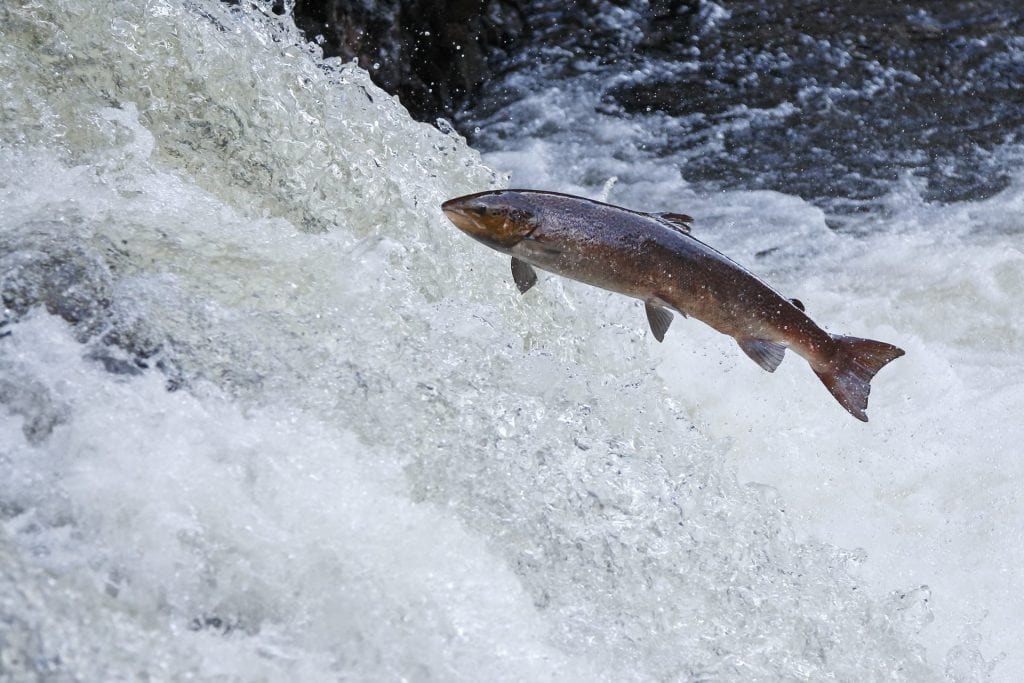Salmon are anadromous, meaning they hatch in fresh water, migrate to the ocean, then return to fresh water to reproduce. The journey made by those salmon that survive this quest to reproduce is one of nature’s greatest triumphs.
The salmon must swim hundreds miles, to get back to the stream where they hatched. Whilst many simply do not have enough fat stores to make the trip, others must battle through fishermen’s nets, over power dams, up waterfalls and rapids, and struggle past eagles, otters and bears to reach their destination.

Salmons change the color of the body on their way from the ocean to the freshwater habitats during the mating season. They may also grow a hump, develop canine-like teeth, or develop a kype (a pronounced curvature of the jaws in male salmon).
Salmon spend between 1 and 7 years out in the ocean, depending on the species. They come back to the stream where they were ‘born’ because they ‘know’ it is a good place to spawn; they won’t waste time looking for a stream with good habitat and other salmon.















